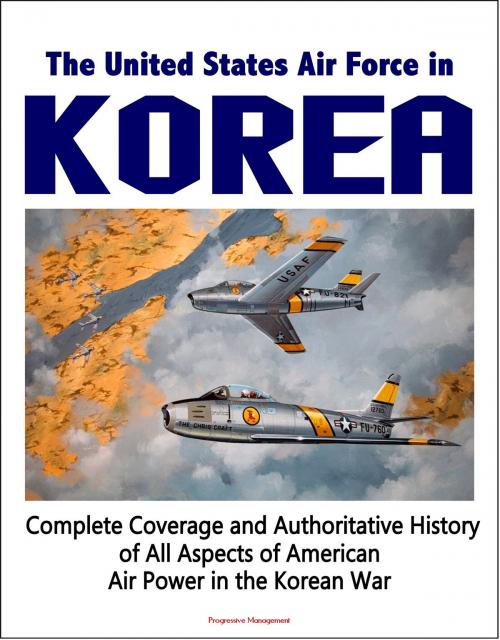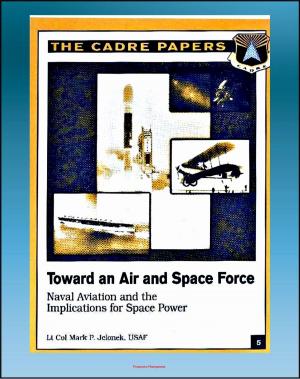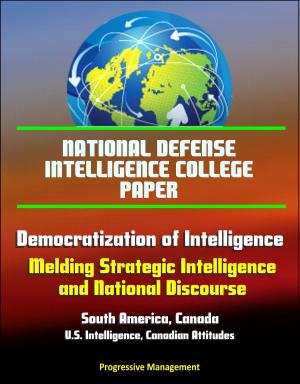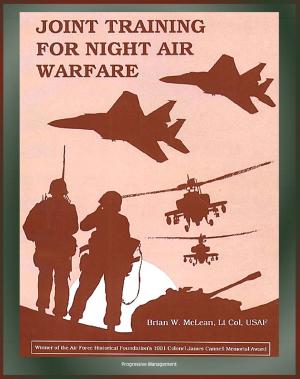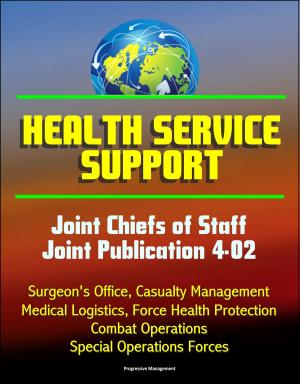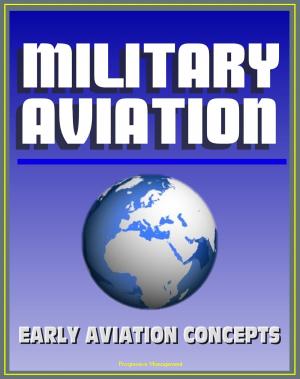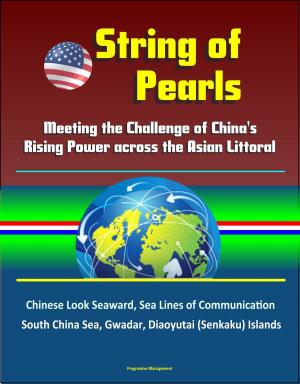The United States Air Force in Korea, 1950-1953: Complete Coverage and Authoritative History of All Aspects of American Air Power in the Korean War
Nonfiction, History, Asian, Korean War, Military, Aviation| Author: | Progressive Management | ISBN: | 9781301132805 |
| Publisher: | Progressive Management | Publication: | December 5, 2012 |
| Imprint: | Smashwords Edition | Language: | English |
| Author: | Progressive Management |
| ISBN: | 9781301132805 |
| Publisher: | Progressive Management |
| Publication: | December 5, 2012 |
| Imprint: | Smashwords Edition |
| Language: | English |
Professionally converted for accurate flowing-text e-book format reproduction, this important and comprehensive historical account of the Korean War and the American Air Force seeks to record the story of the air war as it was.
The Korean War was the first in American history to be limited not by technology, or by the ability of the combatants to mobilize their military power, but by political design. The newly independent Air Force, shaped in the previous two decades by an increasing concentration on the strategic role of attacking an enemy's homeland, now faced a conflict almost entirely tactical in character and limited as to how and where airpower could be applied. Like the rest of the American military establishment, the Air Force was in no way prepared for battle at the western rim of the Pacific. Yet despite these limitations, the Air Force responded quickly and effectively, proving in many ways the utility of airpower in modern war. With virtually no warning, the Air Force injected itself into the war in the first critical week. It transported troops and equipment from Japan to Korea, evacuated American nationals, provided significant intelligence through aerial reconnaissance, and most importantly helped to slow the North Korean advance so that United Nations forces could construct a defensive position on the peninsula. For the next three years, American airpower contributed everywhere to the allied military effort; maintaining control of the airspace over the battlefield; disrupting enemy supplies and movement; supporting the ground armies at the point of contact with the enemy; transporting men and materiel at critical times to the zone of operations.
Futrell describes all of these operations with a clarity and a balance that have since become a model for official military history. Even better, he has analyzed the operations, interpreting their significance overall to the course of the conflict and their importance in the application of airpower to modern war. He shows the effects of close air support in enemy killed, supplies denied, and the turn of battle; he assesses the success or failure of various strategies, tactics, techniques, and methods; he emphasizes the difficulties the Air Force faced and how the challenges were met and overcome. Futrell details the modifications to doctrine and procedure, the changes in organization necessitated by distance or shortages in men and equipment, or by austere and inadequate fields and facilities. And in Dr. Futrell's skilled hands, analyses of failures teaches as much as examinations of successes.
CHAPTER 1. The First Six Days of Communist Aggression * CHAPTER 2. Plans and Preparations * CHAPTER 3. Drawing the Battleline in Korea * CHAPTER 4. In Defense of the Pusan Perimeter * CHAPTER 5. Victory in the South * CHAPTER 6. The Strategic Bombing Campaign * CHAPTER 7. On to the Yalu * CHAPTER 8. Two Months of Defeat and Retreat * CHAPTER 9. Air Superiority-Key to Victory * CHAPTER 10. Target Logistics * CHAPTER 11. Air-Ground Operations on the Field of Battle * CHAPTER 12. Armistice Talks Mark a New Phase of Korean Hostilities * CHAPTER 13. MIG s Seek Air Superiority * CHAPTER 14. Ten Months of Comprehensive Railway Interdiction * CHAPTER 15. Toward an Air-Pressure Strategy * CHAPTER 16. Summer. Autumn 1952 * CHAPTER 17. Air Reconnaissance. Transport, and Rescue * CHAPTER 18. Sustained Air-Pressure Operations * CHAPTER 19. Airpower Achieves United Nations Military Objectives * CHAPTER 20. Air Mission Accomplished
A degree of calculated risk is involved in the preparation of any history of recent events, and this history—written at Maxwell Air Force Base, Alabama, in the months between March 1957 and November 1958—is no exception. The passing of time and the completion of definitive Army and Navy service histories of the Korean war will undoubtedly provide additional historical perspective which was not available to the author of this USAF history.
Professionally converted for accurate flowing-text e-book format reproduction, this important and comprehensive historical account of the Korean War and the American Air Force seeks to record the story of the air war as it was.
The Korean War was the first in American history to be limited not by technology, or by the ability of the combatants to mobilize their military power, but by political design. The newly independent Air Force, shaped in the previous two decades by an increasing concentration on the strategic role of attacking an enemy's homeland, now faced a conflict almost entirely tactical in character and limited as to how and where airpower could be applied. Like the rest of the American military establishment, the Air Force was in no way prepared for battle at the western rim of the Pacific. Yet despite these limitations, the Air Force responded quickly and effectively, proving in many ways the utility of airpower in modern war. With virtually no warning, the Air Force injected itself into the war in the first critical week. It transported troops and equipment from Japan to Korea, evacuated American nationals, provided significant intelligence through aerial reconnaissance, and most importantly helped to slow the North Korean advance so that United Nations forces could construct a defensive position on the peninsula. For the next three years, American airpower contributed everywhere to the allied military effort; maintaining control of the airspace over the battlefield; disrupting enemy supplies and movement; supporting the ground armies at the point of contact with the enemy; transporting men and materiel at critical times to the zone of operations.
Futrell describes all of these operations with a clarity and a balance that have since become a model for official military history. Even better, he has analyzed the operations, interpreting their significance overall to the course of the conflict and their importance in the application of airpower to modern war. He shows the effects of close air support in enemy killed, supplies denied, and the turn of battle; he assesses the success or failure of various strategies, tactics, techniques, and methods; he emphasizes the difficulties the Air Force faced and how the challenges were met and overcome. Futrell details the modifications to doctrine and procedure, the changes in organization necessitated by distance or shortages in men and equipment, or by austere and inadequate fields and facilities. And in Dr. Futrell's skilled hands, analyses of failures teaches as much as examinations of successes.
CHAPTER 1. The First Six Days of Communist Aggression * CHAPTER 2. Plans and Preparations * CHAPTER 3. Drawing the Battleline in Korea * CHAPTER 4. In Defense of the Pusan Perimeter * CHAPTER 5. Victory in the South * CHAPTER 6. The Strategic Bombing Campaign * CHAPTER 7. On to the Yalu * CHAPTER 8. Two Months of Defeat and Retreat * CHAPTER 9. Air Superiority-Key to Victory * CHAPTER 10. Target Logistics * CHAPTER 11. Air-Ground Operations on the Field of Battle * CHAPTER 12. Armistice Talks Mark a New Phase of Korean Hostilities * CHAPTER 13. MIG s Seek Air Superiority * CHAPTER 14. Ten Months of Comprehensive Railway Interdiction * CHAPTER 15. Toward an Air-Pressure Strategy * CHAPTER 16. Summer. Autumn 1952 * CHAPTER 17. Air Reconnaissance. Transport, and Rescue * CHAPTER 18. Sustained Air-Pressure Operations * CHAPTER 19. Airpower Achieves United Nations Military Objectives * CHAPTER 20. Air Mission Accomplished
A degree of calculated risk is involved in the preparation of any history of recent events, and this history—written at Maxwell Air Force Base, Alabama, in the months between March 1957 and November 1958—is no exception. The passing of time and the completion of definitive Army and Navy service histories of the Korean war will undoubtedly provide additional historical perspective which was not available to the author of this USAF history.
